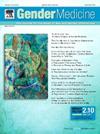The History of Gender
引用次数: 0
Abstract
This chapter traces the history of gender. Most people believe that gender equality is a product of modern times and that the gap between the sexes has decreased due to technology, advocacy, and contemporary social demands. People typically think about early humans as hunter-gatherers and assume that because of the natural capacity for male bodies to be physically stronger and more robust than female bodies, men were the ones primarily responsible for the livelihood and sustainability of a group. As such, people have inferred that men were likely leaders within groups and the ones with the most power; they assume that women’s roles as gatherers were less critical than their male counterparts and thus less valued. However, we are learning that gender roles in early human communities were probably far more egalitarian than what we originally thought. This chapter also delves into evolutionary psychology and distinguishes between patriarchy and matriarchy. It then looks at gender diversity and provides a history of transgender people prior to and during colonization, as well as after the founding of the United States. Finally, the chapter describes what trans activism looks like in the 21st century.性别的历史
这一章追溯了性别的历史。大多数人认为性别平等是现代的产物,由于技术、宣传和当代社会的需求,两性之间的差距已经缩小。人们通常认为早期人类是狩猎采集者,并认为由于男性身体的自然能力比女性身体更强壮,男性主要负责一个群体的生计和可持续发展。因此,人们推断男性可能是群体中的领导者,也是最有权力的人;他们认为,与男性相比,女性作为采集者的角色没有那么重要,因此也就不那么受重视。然而,我们了解到,早期人类社会的性别角色可能比我们最初认为的要平等得多。本章还深入探讨了进化心理学,并区分了父权制和母权制。然后,它着眼于性别多样性,并提供了殖民之前和殖民期间以及美国建国后变性人的历史。最后,本章描述了跨性别行动主义在21世纪的样子。
本文章由计算机程序翻译,如有差异,请以英文原文为准。
求助全文
约1分钟内获得全文
求助全文

 求助内容:
求助内容: 应助结果提醒方式:
应助结果提醒方式:


